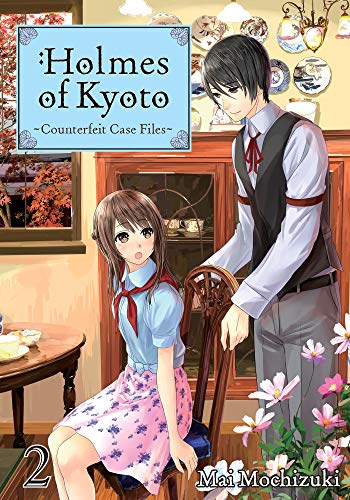By Mai Mochizuki and Shizu Yamauchi. Released in Japan by Futabasha. Released in North America by J-Novel Club. Translated by Minna Lin.
Rarely have I had to eat my words quite so much as I have in the gap between my review of the third volume and this one, and I urge readers to absolutely not go back and read it. Still, it does mean we have to confront the elephant in the room, though admittedly the book is doing it as well. This series features a man just out of college in love with a girl still in high school, and Japan sure has no issues with this whatsoever given the sheer number of titles out lately featuring age-gap romances, but Western readers tend to dig in their heels a lot more. Now, let’s not kid ourselves, things are not going anywhere anytime soon. Indeed, I will be very surprised if anything happens before Aoi turns 18. Mostly as Aoi continues to delude herself about Holmes’s feelings towards her, which are not only obvious to the reader but are starting to be obvious to everyone else as well. Fortunately by the end of the book, Aoi has at least come to a different realization.
As with other books in this series, we get a short story and three longer ones. The short story is simply Holmes taking Aoi on a date, though she doesn’t actually realize that’s what it is. We then get to meet Holmes’ grandmother, who has a bisque doll that strangely is the distaff counterpart to one they have in the antique shop… and one which might be haunted! After that, despite the author’s assurances in previous afterwords, we get what amounts to a murder mystery, albeit one where the victim survived, and Holmes is forced to deal with a case whose only artwork is the books of an author. Lastly, we meet the owner’s stepson Rikyu, who idolizes Holmes and who clearly is NOT loving Aoi at all. Will she be able to win him over by being a quasi-appraiser at an event thrown by Rikyu’s grandfather to determine who gets his inheritance?
As noted, the second case, while quite well done, feels a bit different to the other “cases” we’ve read, even though we’ve dealt with death and attempted assault in previous books. Possibly for this reason, it also feels a bit overdone, with Holmes’ talents not feeling as natural as they do when he’s looking at antiques. The third story was the best, as Rikyu is a fun addition to the cast, basically being a sullen teen who’s unhappy that his favorite relative is being taken away from him by another woman. I will admit that Aoi’s preternatural progress in learning about artwork and antiques is almost as unrealistic as Holmes turning into Hercule Poirot, but the moment is set up really well and you feel so happy for her I’ll grant it. And we do get an awful lot about Holmes clear feelings for Aoi and mistrust of other men (he’s right, she is awfully naive) as well as Aoi’s tendency towards self-loathing cropping up, thinking that Holmes is “far beyond her”… but at least, right at the end, she can admit to herself she’s fallen in love with him.
So yes, last time I said this wasn’t one for romance fans, and I will have to take that back, but I do think that mystery fans will get more out of this. We’ll see what happens in the next volume, this is a long-running series.



